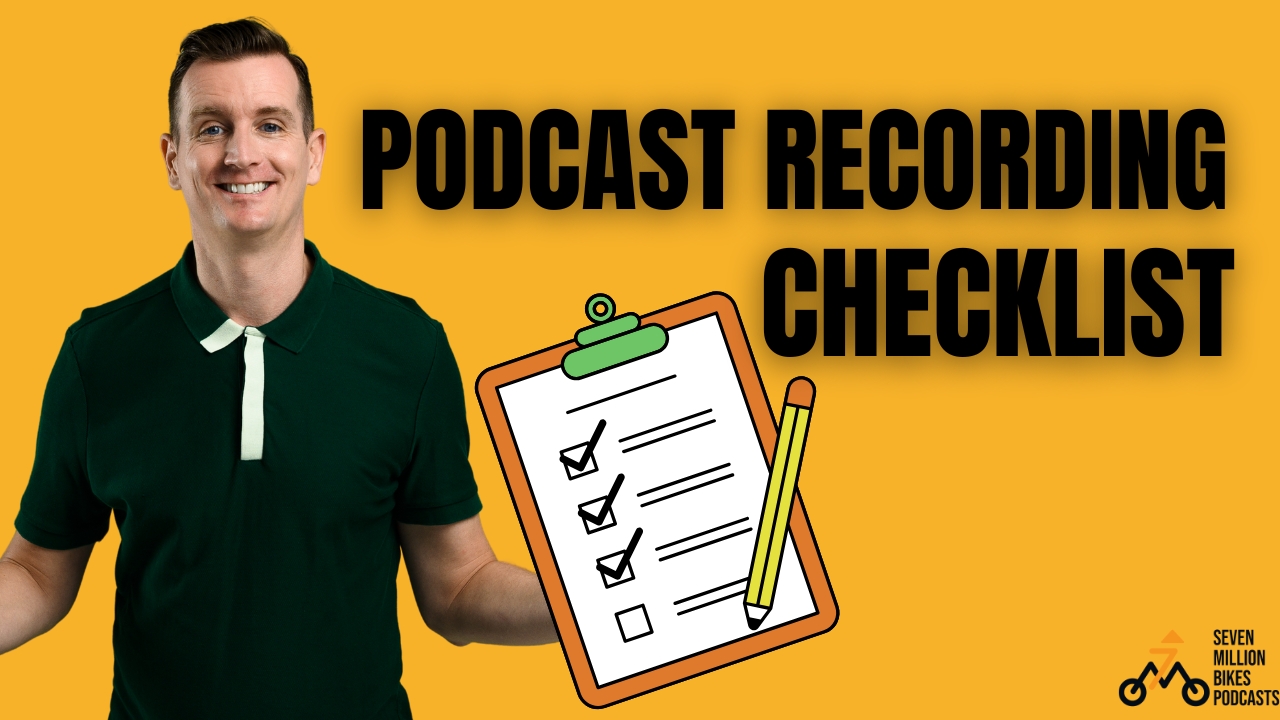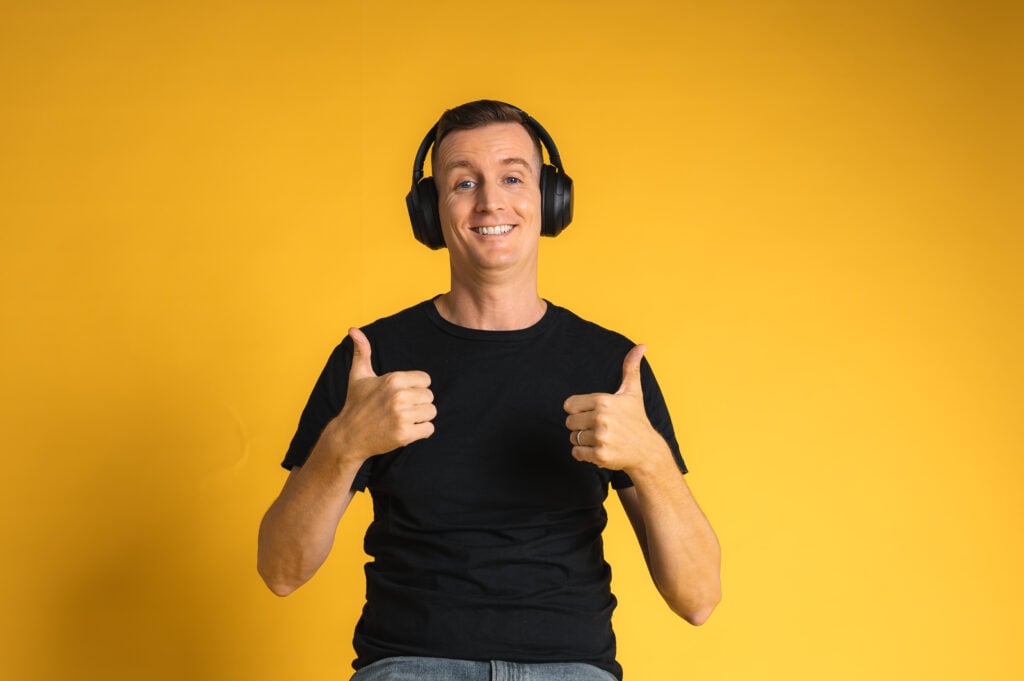Podcast Recording Checklist: Everything You Need to Start
Got the ideas in mind, but not sure what you need to start your podcast? Let’s discover the ultimate podcast recording checklist.
My name is Niall Mackay, founder of Seven Million Bikes Podcasts. I’ve been podcasting for years, so I can equip myself with a detailed list for starting your own podcast.
I’ll cover must-have podcast equipment, helpful software, and practical tips for both home and studio setups.
Table of Contents
Why You Need a Podcast (Especially if You’re a Brand or Expert)
Podcasting isn’t just for celebrities and tech geeks anymore. In 2025, it’s one of the most powerful tools available for building trust, growing your audience, and positioning yourself as an expert—all without spending a fortune.
One of the most powerful podcast’s benefits is networking. You can expand your relationships across industries and find potential clients. Here is how: Podcast Benefits for Business: Podcasting for Networking
Build Authority and Trust in Your Niche
Anyone can write a blog post. Not everyone can speak confidently and consistently into a microphone, sharing valuable insights and having real conversations. That’s why podcasts build credibility fast.
People buy from voices they trust. Podcasting helps you become that voice.
Grow Your Audience Organically
A podcast is a discovery machine. Unlike social media algorithms that bury your content within hours, podcast platforms like Spotify and Apple Podcasts make your content searchable and evergreen.
Because many podcast listeners are multitasking (driving, working out, cleaning), you get their full attention for longer than a tweet or Instagram post ever could.
Create Long-Form Content That Feeds Other Platforms
One 30-minute podcast episode can turn into:
- A blog post (like this one)
- Several LinkedIn or Facebook posts
- Audiograms or short reels for Instagram and TikTok
- YouTube content if you record a video
Hence, instead of creating new content from scratch every day, your podcast can become the core of your content marketing strategy.
Learn more about repurposing content: How To Repurpose Podcast Content: 7 Strategies to Expand Your Audience
What You Need to Start a Podcast (Podcast Recording Checklist)
So, you’ve got a great podcast idea—but what exactly do you need to record it? From essential gear to software and setup, this podcast recording checklist covers everything you need to get started the right way.
1. A Quality Microphone
Your microphone is the foundation of your podcast setup. Poor audio is the number one reason listeners drop off, so investing in a decent mic is non-negotiable.
USB microphones are ideal for beginners. They plug directly into your computer and are easy to set up. These are great for solo podcasters or those on a budget.
Popular choices include:
- Blue Yeti
- Audio-Technica ATR2100x
- Samson Q2U
XLR microphones deliver higher audio quality and are standard in professional podcast studios. However, they require an audio interface or mixer to connect to your computer.
Trusted models include:
- Shure SM7B
- Rode PodMic
- Electro-Voice RE20
One of the most important decisions you’ll face is choosing between a USB or XLR microphone. Both options can deliver great audio, especially with high-quality dynamic mics like the Maono PD400X or Shure MV7, which conveniently support both USB and XLR connections.
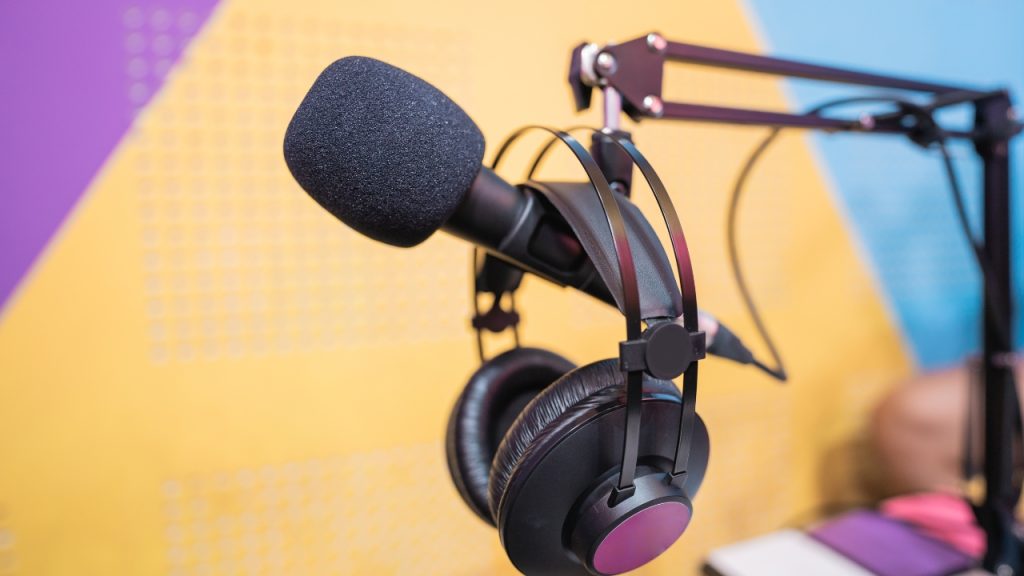
I understand choosing a proper microphone for the first time may be difficult, I broke it down in detail here: The Best Podcast Microphones For Any Budget In 2025
2. Closed-Back Headphones
You may wonder why podcasters wear headphones all the time. To produce a high-quality show, you need to hear what you’re recording in real time. Closed-back headphones block out external noise and prevent sound bleed into your microphone.
Look for comfort, accurate sound monitoring, and durability. Recommended options include:
- Audio-Technica ATH-M50x (What I use and recommend)
- Sony MDR-7506
- Beyerdynamic DT 770 Pro
These help you catch background noise, mic issues, or voice distortions while recording or editing.
3. Audio Interface or Mixer
If you opt for an XLR microphone, you’ll need an audio interface or mixer to convert your voice into a digital format your computer can process.
Audio interfaces are more common for podcasters and offer a simple, high-quality way to record.
Top choices include:
- Focusrite Scarlett 2i2
- PreSonus AudioBox USB 96
Mixers give you more control over sound levels, effects, and multiple audio sources—ideal for live shows or multi-person setups.
Try options like:
- Rodecaster Pro
- Zoom PodTrak P4 (What I use and recommend)
If you’re recording interviews, panel discussions, or plan to go live, a mixer might be worth the investment.
4. Recording and Editing Software (DAW)
Once your hardware is ready, you’ll need recording software—also known as a Digital Audio Workstation (DAW). This is where you capture, edit, and export your podcast episodes.
Popular options include:
- Descript (What I use and recommend)
- Audacity (Free, cross-platform)
- GarageBand (Free for macOS)
- Adobe Audition (Paid, professional-grade)
Choose software based on your recording style. If you’re a beginner, start simple. If you plan to do advanced editing or remote interviews, choose tools that can grow with your podcast.
My team and I only use Descript for editing as it is a text-based editing software, which makes the podcast editing process much simpler. It also offers a wide range of AI functions to eliminate background noises or filler words and much more.
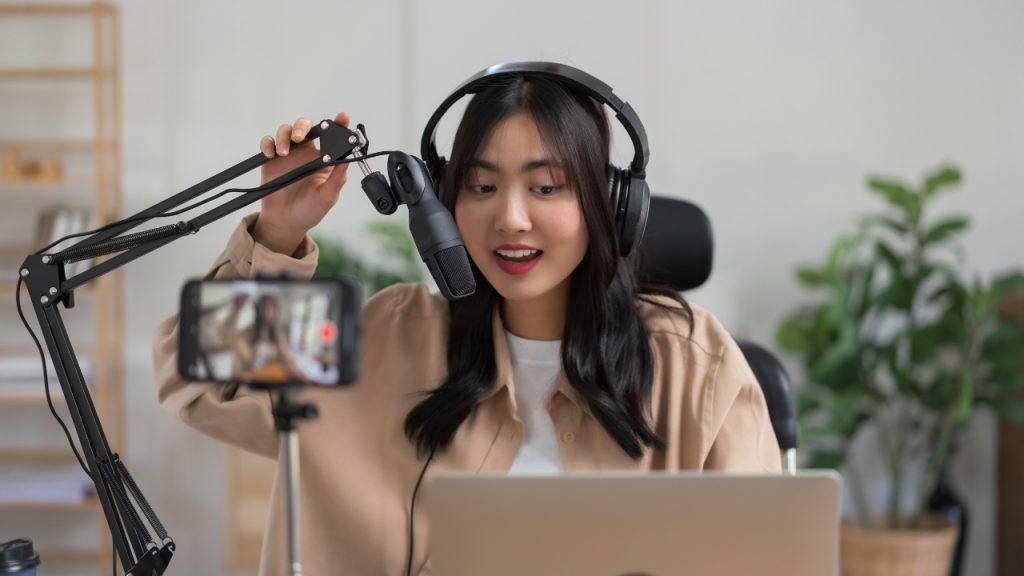
5. Soundproofed Recording Space
Even the best gear can’t save you from a noisy or echo-prone environment. To produce clean, professional audio, you need a quiet and acoustically treated space.
If you’re recording at home:
- Choose a small room with soft surfaces (rugs, curtains, cushions)
- Add foam panels, heavy blankets, or a portable vocal booth
- Avoid hard surfaces and background noise (fans, fridges, open windows)
- Inform others before you record to avoid interruptions
If background noise is a consistent issue, consider renting or booking a podcast studio to get the best sound quality.
6. Backup and File Management
Losing an episode due to a technical error or file corruption can be devastating. That’s why file backups and a solid management system are essential.
Here’s what we recommend:
- Save raw and edited files on an external SSD or HDD
- Use cloud storage platforms like Google Drive or Dropbox
- Organize your files by season, episode number, and date
7. Extra Tools and Furniture for Video Podcasting
If you’re planning to launch a video podcast, you’ll need a few additional tools beyond the standard podcast equipment checklist.
- Video Camera or Webcam: You don’t need to start with a cinema-quality camera, but your audience should be able to see you clearly.
- Lighting setup: Good lighting can instantly boost the quality of your video podcast. Uneven lighting or shadows can distract viewers and lower production value.
- Tripods and Mounts: Stable video is a must. Shaky footage can distract viewers and make your podcast seem unprofessional.
- Furniture and Set Design: Your background is part of your podcast’s branding, especially for clips you’ll post on social media.
Video podcasts are becoming more and more popular as they can be repurposed into short clips or can reach a wider range of customers. If you’re planning to start one, read my guidance here: How To Record A Video Podcast – 4 Steps For Success
Podcast Recording Tips and Mistakes to Avoid
Besides the podcast recording checklist, a beginner should know some tips and avoid certain mistakes.
After 6 years of podcasting, I have gained experience as well as made mistakes. Below are practical podcast recording tips to help you succeed and common podcasting mistakes to avoid.
Podcast Recording Tips to Level Up Your Episodes
These tried-and-true techniques will help you improve your sound quality, reduce post-production stress, and create a more enjoyable experience for your audience.
1. Script or Outline Your Episode
You don’t have to read from a script word-for-word, but having a clear outline helps you stay on track and avoid rambling. Include your intro, key talking points, transitions, and call-to-action. Preparation improves flow and makes editing easier later.
2. Test Your Microphone and Levels
Before hitting “record,” test your mic levels to make sure you’re not too quiet or peaking (which causes distortion). Aim for your voice to sit between -6 dB and -12 dB in your DAW or recording software. A simple sound check prevents wasted sessions.
3. Record in a Quiet Environment
Eliminate background noise by turning off fans, air conditioners, and unnecessary electronics. Record in a sound-treated room or use soft furnishings (curtains, rugs, cushions) to reduce echo. A quiet space is essential for professional podcast sound quality
If you don’t have a quality home studio, consider booking a podcast studio for a higher quality. This investment is worth it, believe me.
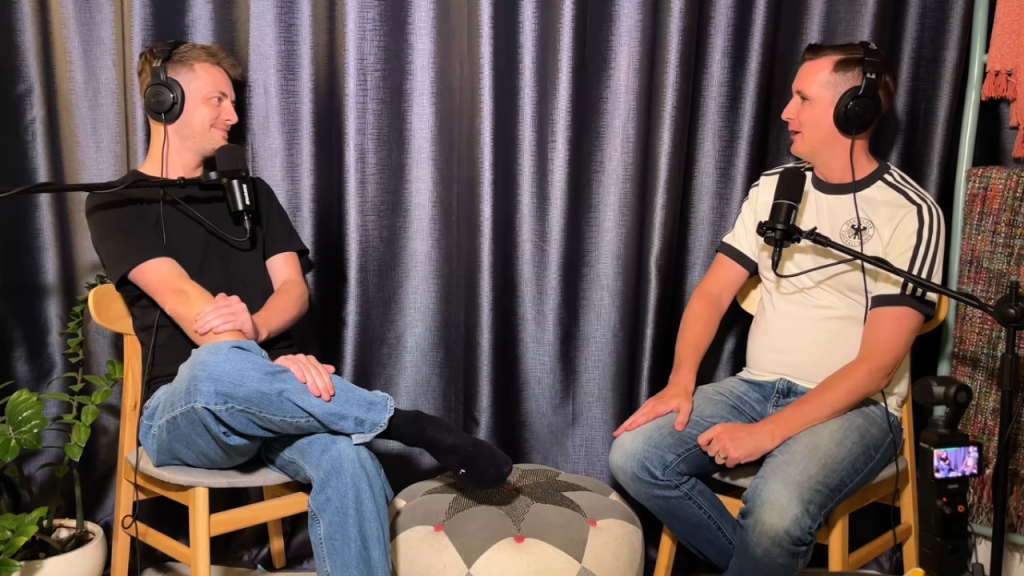
4. Use a Pop Filter or Windscreen
These inexpensive tools block harsh “P” and “S” sounds that can ruin audio. A pop filter placed a few inches from your microphone will make your voice sound smoother and easier to listen to.
5. Save Backups of Every Episode
Always save at least two copies of your raw and edited audio files—ideally in separate locations like a cloud drive and an external hard drive. Backups protect you from accidental file loss or software crashes.
Common Podcasting Mistakes to Avoid
1. Poor Audio Quality
Using a built-in laptop mic or skipping post-production is one of the fastest ways to lose listeners. Invest in a decent microphone and prioritize clean, consistent sound. Even a budget USB mic can make a huge difference.
2. Inconsistent Publishing Schedule
Releasing episodes irregularly confuses your audience and hurts your growth. Whether it’s weekly or biweekly, choose a schedule you can stick to and communicate it clearly to your audience.
3. Lack of Planning or Show Structure
Going into an episode without a plan often results in unfocused content. Your show should have a consistent structure, such as an intro, main discussion, and closing, that listeners can rely on.
Final Thoughts: Set Yourself Up for Podcasting Success
Remember, great content starts with great audio. Invest in the essentials, plan your episodes thoughtfully, and always put your listeners first. In addition to a good podcast recording checklist, the editing process is key to helping elevate your audio quality. Consider outsourcing editing services at Seven Million Bikes Podcasts if you need any help.
If you find the producing and editing process stressful and time-consuming, reach out to us for the Podcast Launch Lab! In 14 days, you can get your podcast on board.

